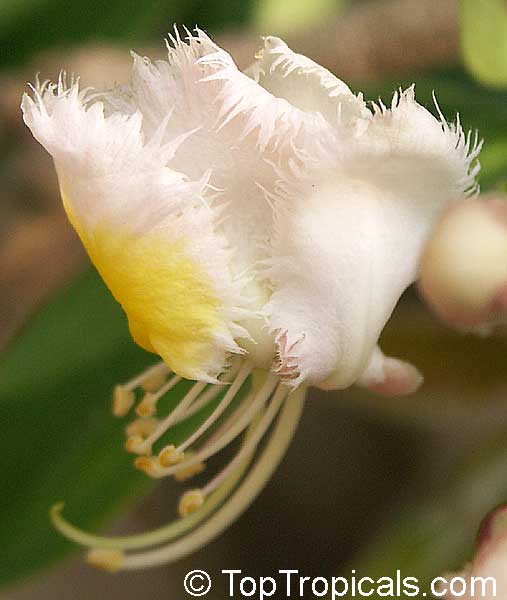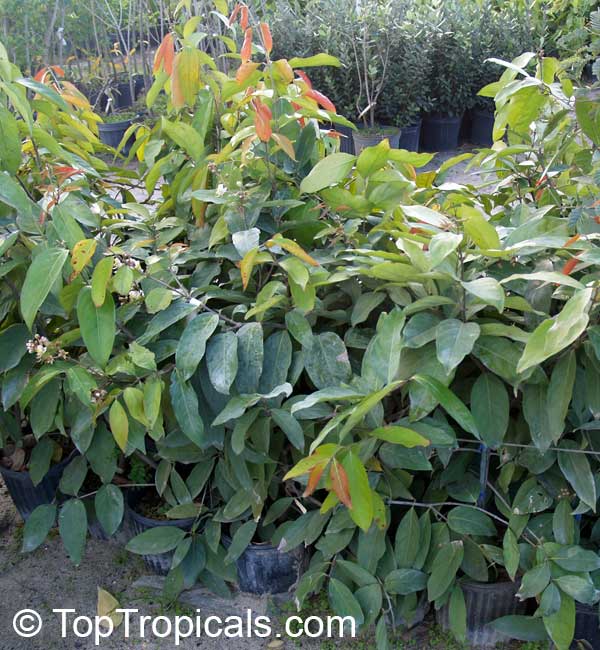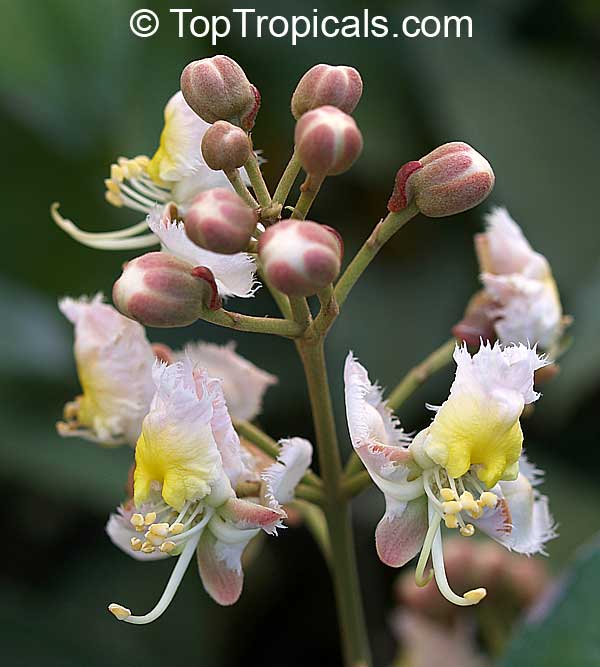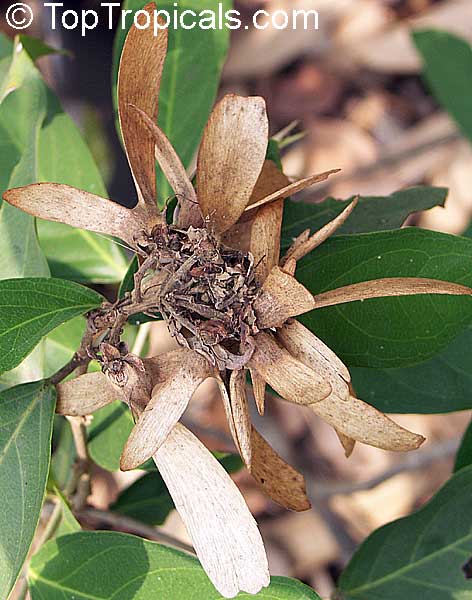Featured plant - a special for your collection
Hiptage beghalensis - Helicopter Flower or Madhavi, the Spring Herald
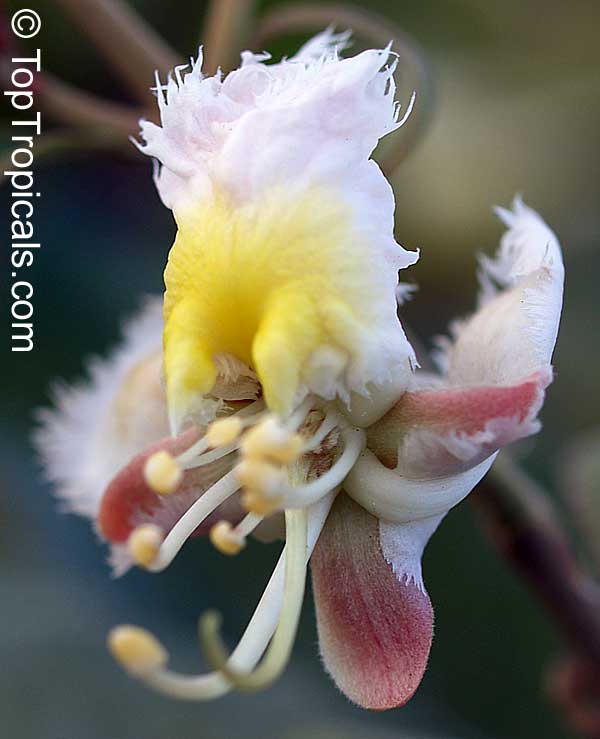
Family: Malpighiaceae
Scientific names/synonyms: Hiptage benghalensis, Banisteria benghalensis, Banisteriatetraptera, Hiptagejavanica, Hiptagemacroptera, Hiptagemadablota, Hiptagemalaiensis, Hiptageobtusifolia, Hiptagepinnata, Hiptageteysmannii, Molinaracemosa, Succowiafimbriata, Triopteris jamaicensis.
Common and local names: Helicopter Flower, Adimurtte, Adirganti, Atimukta, Chandravalli, Haldavel, Kampti, Kamuka, Madhalata, Madhavi Lata, Madhavi, Madhumalati, Madmalati, Ragotpiti, Vasantduti
Origin: native to warm-temperate Asia (South China and Taiwan) and tropical Asia (India; Indochina; Indonesia; Malaysia; Myanmar; Philippines; Sri Lanka; Thailand). Also cultivated elsewhere in the tropics, and widely introduced to Hawaii. Other species occur in Western China, subtropical Asia, Formosa, Malaya and Pacific Islands.
The genus name, Hiptage, is derived from the Greek, hiptamai, which means "to fly" and refers its unique three-winged fruit.

Hiptage benghalensis is a high-climbing liana (woody, climbing vine) or large shrub with unusually shaped, strongly perfumed flowers. They are pink to white, with yellow marks. The corolla consists of five free, elliptic to round, reflexed petals, white with one petal yellow in the center, margins fringed. The plant flowers intermittently during the year, flowers borne in compact axillary racemes.
Leaves are large and elongated, pointed, sometimes turn bright red color when young.
Due to the beautiful unique form of its flowers Hiptage is cultivated as an exotic tropical ornamental. The plant is fast growing and tolerates wide range of conditions, it is easy to grow even for a beginner. Its natural habitat is variable, ranging from warm temperate to tropical climates and can be found in nature in both dry and moist areas from sea level to high elevations. As a forest climber, the plant will tolerate shady conditions, but it also will grow happily in full sun and will produce more flowers in well-lit spot.
Hiptage can be trimmed to form a small tree or shrub or can be trained as a vigorous vine, which requires a strong support. It can easily be grown in container if trimmed, and will form a dense bush of a nice round shape.
It blooms year round, with the most profuse blooming from January through March, it is valued especially for its winter fragrance, when most of other plants are dormant or resting. The fragrance resembles a fine fruity perfume; it is said to improve sensuality and emotional comfort.
Hiptage is cultivated for medicinal purposes and holds a reputed position in Indian medicine. The leaves and bark are hot, acrid, bitter, insecticidal, vulnerary and useful in treatment of cough, burning sensation, and inflammation; it has the ability to treat skin diseases, particularly useful for dermatitis. An application made out of the plant is highly beneficial in scabies. It's bark is aromatic and is used in medicine to cure rheumatism and asthma.
 One of the local Indian names of the plant, Madhavi (Lata), came from Indian legends. There are several legends associated with this name.
One legend tells us a story of Yayati (Yajati), the Fifth King of the Moon Dynasty that leads back to God Indra. Yayati had two wives: Devayani and Sarmishtu. Devayani gave birth to the son Yaadu, and Sarmishta had a son Puru, those who started the two royal dynasties. Later three more sons were born, total of five. When Yayati got old, God Indra invited him for a talk. They spoke for a long time, and the inspired King returned back home. He commanded his people to live a rightful, virgin and pure life without any passions and physical desires, and this will bring them immortality. So it happened, and people wouldn't die any more. God Indra became very concerned with this fact, since the Great Circle of Life and Death was disturbed. So He sent Asurvindumati, daughter of Kamadeva (God of Love), to visit Yayati. The King immediately fell in love with her and lost any control on his feelings and infatuations. He made a decision to merry the beautiful girl. However, Yayati was very old by then. So he came up to his sons and asked them to exchange their youth with his own age. All of his sons refused to do so, except for Puru, the most devoted and loving son. So Yayati took his son's youth, and happily married Asurvindumati. Very soon a daughter was born is this marriage. She was named Madhavi - "A Spring Herald". Her mother Asurvindumati returned back to the Heaven, and Yayati spent another thousand years in pleasure and health, then got tired of being young and active, and returned the youth back to his son. Yayati retired into the woods and died by stopping taking any food, and was taken to the Heaven. The five sons divided their inheritance (known in history as Rajarshi Dynasty), and Madhavi grew up into a beautiful and sensual young woman. One night, she heard a whisper out of the crown of a mango tree. "Who are you?" - she asked. "I'm the one who came for you, my beloved one, come to me". Madhavi followed the whisper and was lead to a mango tree. Once she touched the trunk, the tree turned into a young man, and he embraced her in his arms. The man was a human incarnation of God Prajayapati, the Creator of Life. The lovers joined together, and the Time stopped for them forever. Since then, they stayed together: the beautiful strong Mango, symbol of Life, and the fragrant Spring Herald - Madhavi, clinging around him. In India, a mango fruit is considered as Creator's blessing, and a Hiptage flower - as a symbol of sensual love and spiritual success.
One of the local Indian names of the plant, Madhavi (Lata), came from Indian legends. There are several legends associated with this name.
One legend tells us a story of Yayati (Yajati), the Fifth King of the Moon Dynasty that leads back to God Indra. Yayati had two wives: Devayani and Sarmishtu. Devayani gave birth to the son Yaadu, and Sarmishta had a son Puru, those who started the two royal dynasties. Later three more sons were born, total of five. When Yayati got old, God Indra invited him for a talk. They spoke for a long time, and the inspired King returned back home. He commanded his people to live a rightful, virgin and pure life without any passions and physical desires, and this will bring them immortality. So it happened, and people wouldn't die any more. God Indra became very concerned with this fact, since the Great Circle of Life and Death was disturbed. So He sent Asurvindumati, daughter of Kamadeva (God of Love), to visit Yayati. The King immediately fell in love with her and lost any control on his feelings and infatuations. He made a decision to merry the beautiful girl. However, Yayati was very old by then. So he came up to his sons and asked them to exchange their youth with his own age. All of his sons refused to do so, except for Puru, the most devoted and loving son. So Yayati took his son's youth, and happily married Asurvindumati. Very soon a daughter was born is this marriage. She was named Madhavi - "A Spring Herald". Her mother Asurvindumati returned back to the Heaven, and Yayati spent another thousand years in pleasure and health, then got tired of being young and active, and returned the youth back to his son. Yayati retired into the woods and died by stopping taking any food, and was taken to the Heaven. The five sons divided their inheritance (known in history as Rajarshi Dynasty), and Madhavi grew up into a beautiful and sensual young woman. One night, she heard a whisper out of the crown of a mango tree. "Who are you?" - she asked. "I'm the one who came for you, my beloved one, come to me". Madhavi followed the whisper and was lead to a mango tree. Once she touched the trunk, the tree turned into a young man, and he embraced her in his arms. The man was a human incarnation of God Prajayapati, the Creator of Life. The lovers joined together, and the Time stopped for them forever. Since then, they stayed together: the beautiful strong Mango, symbol of Life, and the fragrant Spring Herald - Madhavi, clinging around him. In India, a mango fruit is considered as Creator's blessing, and a Hiptage flower - as a symbol of sensual love and spiritual success.
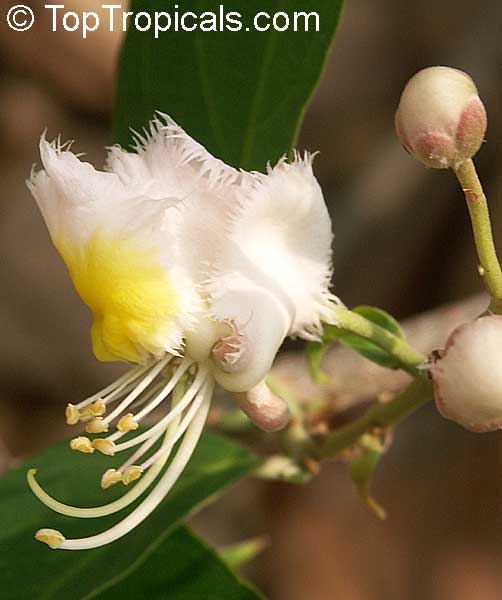
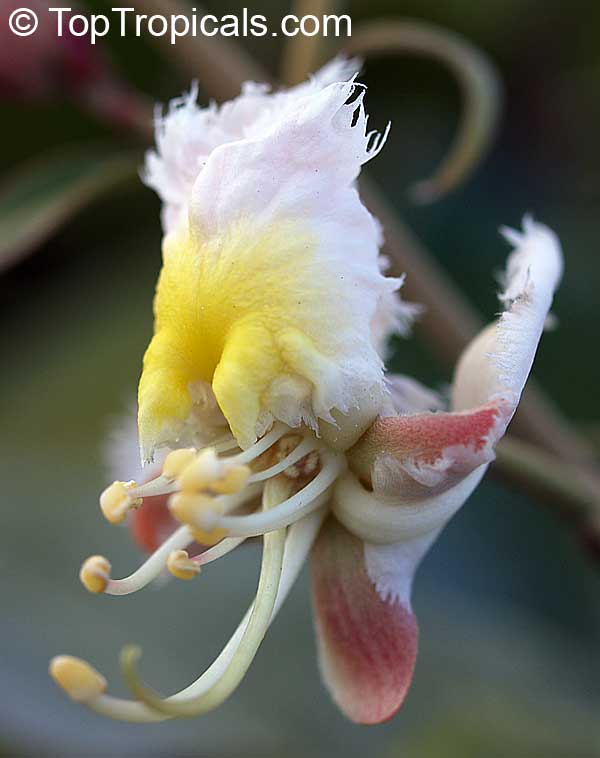
One more legend says that the name Madhavi was given to the plant after Vishnu's wife - Madhava. Symbolically, she, the mother of the Earth, is the creeping vine, and Vishnu is a Mango Tree around which she clings for support.
The plant was known to the Hindus from very early times as seen from its frequent mention in ancient Indian literature. In flower symbolism it is compared to a frail young woman who clings for support to her Lord and Master, symbolized by the strong Mango Tree.
There is another reference to the marriage of Mango Tree and Madhavi Lata Vine: when Rishi Kanva discovered that his adopted daughter Sakuntala had met King Dushyanta, the man of her choice, Rishi said to her that he had for long been looking for a handsome mango tree referring obviously to Dushyanta and that now he would give his Madhavi Lata, i.e. Sakuntala to him in marriage.
For a tropical gardener, It would be a good idea to plant these two plant together, with the Mango Tree giving a strong support, and Hiptage (Madhavi) vine providing fine sensual fragrance around it.

Additional reading:
- Shakti Gupta "Plant Myths and Traditions in India"
- Morton, J. 1987. Mango. Fruits of warm climates. Julia F. Morton, Miami, FL.Strahm, Wendy . Ph.D., IUCN. 2002
- Liu & Liaw, Banisteria benghalensis L., Woodly Flowers 1-1979
- Matsumura Hayata, Hiptage madablota, Tokio 1906
- Indian Express, Bombey, 1999, December 1; P. Oudhia, Vasanti, Bombey, 2004
